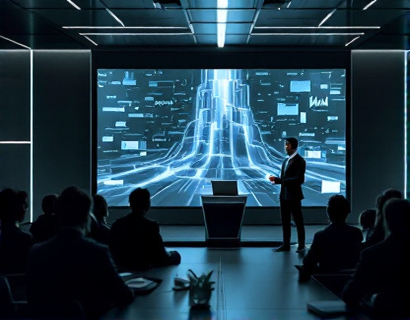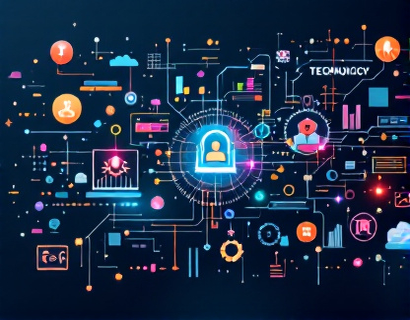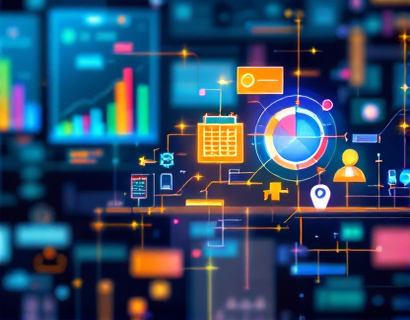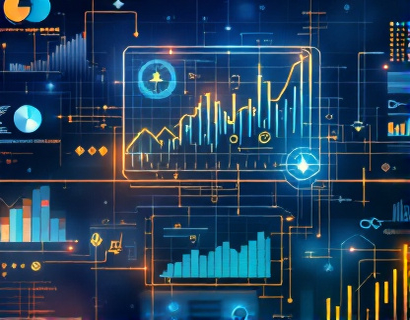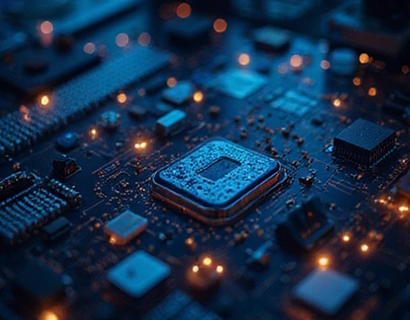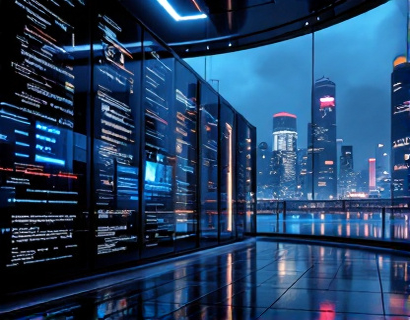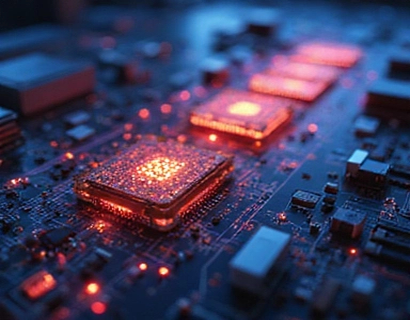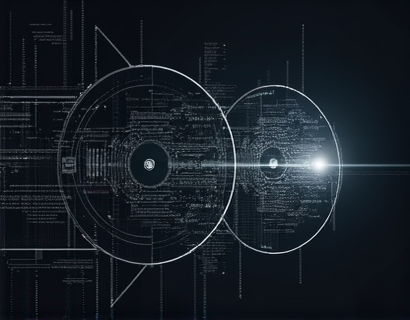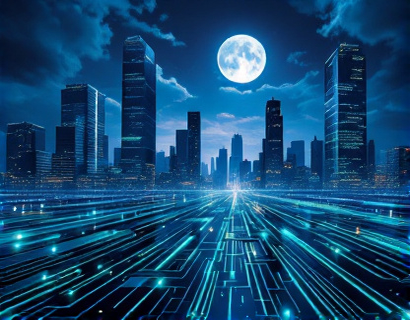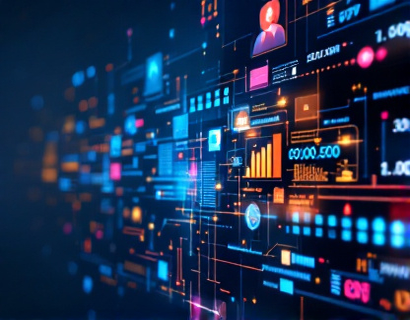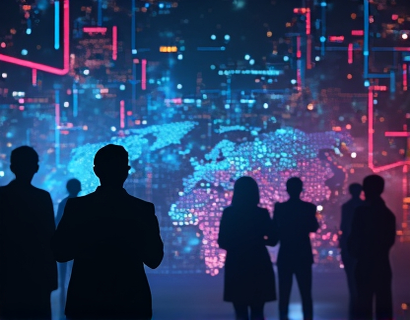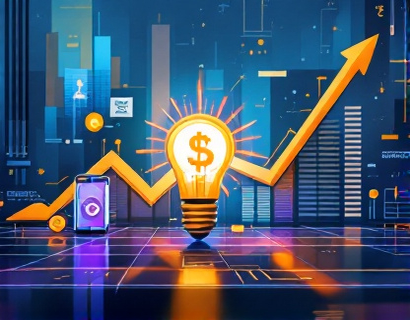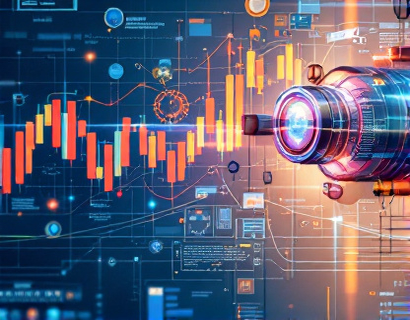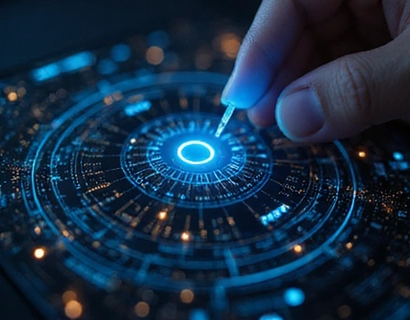Decentralized Innovation: Unleashing the Future with AI and Crypto-Powered Digital Solutions
The intersection of artificial intelligence and cryptocurrency is giving birth to a new era of decentralized innovation. This fusion is not just a technological curiosity but a transformative force that is redefining digital experiences and enhancing user engagement. As we delve into this revolutionary space, it's essential to understand how these technologies are merging to create decentralized applications and services that are set to rehape the digital landscape.
Decentralized applications, or dApps, are built on blockchain technology, which ensures transparency, security, and decentralization. Unlike traditional applications that rely on centralized servers, dApps distribute data and processing across a network of nodes. This decentralized architecture not only enhances security but also reduces the risk of single points of failure. When AI is integrated into this framework, the potential for innovation becomes immense.
AI, with its ability to process vast amounts of data and learn from patterns, can significantly enhance the functionality of dApps. For instance, AI-driven algorithms can optimize resource allocation, improve user interfaces, and provide personalized experiences. In a decentralized environment, these AI capabilities can be harnessed without the need for a central authority, making the system more efficient and user-centric.
Enhancing User Experience through AI and Decentralization
One of the most significant benefits of combining AI with decentralized technologies is the enhancement of user experience. Traditional centralized systems often struggle with scalability and responsiveness, leading to slow load times and limited functionality. Decentralized systems, powered by AI, can dynamically adjust to user needs, ensuring faster and more reliable service.
For example, AI can be used to create intelligent chatbots that operate on decentralized platforms. These chatbots can provide instant support and assistance, understanding user queries and providing relevant responses without the need for human intervention. The decentralized nature of these chatbots ensures that they are always available and can handle a large volume of users simultaneously.
Moreover, AI-driven analytics can help decentralized platforms gain insights into user behavior and preferences. This data can be used to tailor experiences, recommend content, and improve overall usability. The combination of AI and decentralization ensures that user data is handled securely and transparently, building trust and fostering a more engaging user environment.
Decentralized Transformation: Harnessing AI and Crypto for a New Digital Era
The transformative potential of decentralized solutions augmented by AI and cryptocurrency is vast. This new digital era is characterized by increased autonomy, enhanced security, and innovative business models. Let's explore some key areas where this transformation is taking place.
Firstly, decentralized finance (DeFi) is a prime example of how AI and cryptocurrency are reshaping the financial landscape. DeFi platforms leverage blockchain to offer financial services such as lending, borrowing, and trading without intermediaries. AI algorithms can optimize these processes, predicting market trends, managing risks, and automating transactions. This not only increases efficiency but also makes financial services more accessible to a global audience.
Another area is decentralized identity management. Traditional identity systems are centralized and vulnerable to breaches. Decentralized identity solutions use blockchain to give users control over their personal data. AI can enhance this by creating secure and verifiable digital identities, ensuring that users can authenticate themselves without compromising privacy. This is particularly crucial in an era where data breaches and identity theft are rampant.
Smart Contracts and AI: A Powerful Combination
Smart contracts, self-executing contracts with the terms directly written into code, are a cornerstone of decentralized applications. When AI is integrated into smart contracts, the possibilities expand further. AI can analyze complex scenarios, make decisions, and execute contract terms with a level of sophistication that traditional smart contracts cannot match.
For instance, in supply chain management, AI-powered smart contracts can monitor and manage the entire process from production to delivery. These contracts can automatically trigger actions based on real-time data, such as adjusting shipment routes to avoid delays or ensuring compliance with regulatory standards. This level of automation and intelligence significantly reduces errors and increases efficiency.
Innovative Business Models Driven by Decentralization and AI
The convergence of decentralization and AI is also giving rise to new business models that are more equitable and sustainable. Traditional business models often centralize power and profit, leaving marginalized groups at a disadvantage. Decentralized platforms powered by AI can democratize access to resources and opportunities.
One such model is decentralized autonomous organizations (DAOs). DAOs are community-driven entities governed by smart contracts and AI algorithms. Members of a DAO can propose, vote on, and execute decisions collectively, ensuring a more democratic and transparent decision-making process. AI can facilitate this by analyzing community input, predicting outcomes, and optimizing governance structures.
Another innovative model is decentralized content creation and monetization. Artists, writers, and creators can use blockchain to tokenize their work, allowing fans and supporters to purchase and own fractions of digital assets. AI can enhance this by generating personalized content recommendations, managing rights and royalties, and even creating collaborative art pieces. This not only empowers creators but also provides a more direct and fair way for audiences to support their favorite artists.
Challenges and Considerations
While the potential of decentralized AI-powered solutions is immense, there are several challenges that need to be addressed. One of the primary concerns is scalability. Blockchain networks, especially those using proof-of-work consensus mechanisms, can struggle with high transaction volumes and slow processing times. However, the development of more efficient consensus algorithms and layer 2 solutions is addressing these issues.
Another challenge is regulatory uncertainty. The decentralized nature of these technologies often falls into a gray area of existing laws and regulations. As the ecosystem grows, it's crucial for policymakers to create clear and supportive frameworks that encourage innovation while protecting users.
Security is also a critical aspect. While blockchain is inherently secure, the integration of AI introduces new vulnerabilities. Ensuring the integrity of AI algorithms and protecting against adversarial attacks is essential. Continuous research and development in cybersecurity are necessary to safeguard these decentralized systems.
The Future of Digital Interactions
As we look to the future, the integration of AI and decentralization is poised to revolutionize digital interactions in profound ways. The combination of these technologies will lead to more intuitive, secure, and user-driven digital experiences. Here are some potential developments to watch:
First, the rise of decentralized social media platforms powered by AI. These platforms can offer privacy-preserving features, such as end-to-end encryption and data ownership, while using AI to curate content and enhance user engagement. The decentralized nature ensures that these platforms are resistant to censorship and manipulation.
Second, the evolution of decentralized gaming. AI can create more realistic and dynamic game environments, while blockchain can ensure fair play and reward players transparently. NFTs (non-fungible tokens) can represent unique in-game assets, giving players true ownership and the ability to trade these assets on decentralized markets.
Third, the expansion of decentralized healthcare solutions. AI-driven diagnostics and personalized treatment plans can be combined with blockchain to create secure and interoperable health records. Patients will have control over their medical data, and healthcare providers can access comprehensive and accurate information to improve patient care.
Conclusion
The fusion of AI and decentralization is not just a technological trend but a fundamental shift in how we approach digital interactions. This partnership is unlocking new possibilities, enhancing user experiences, and creating more equitable and sustainable systems. As the technology continues to evolve, it's essential for tech enthusiasts, innovators, and early adopters to stay informed and engaged. The future is decentralized, intelligent, and full of promise.






